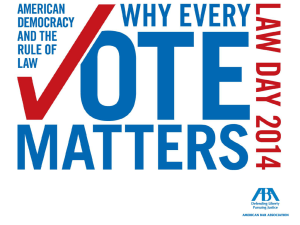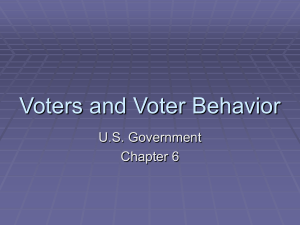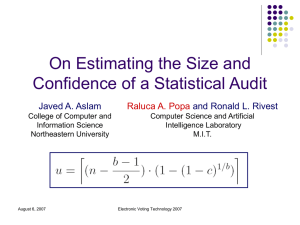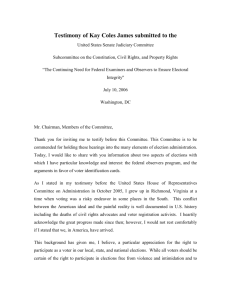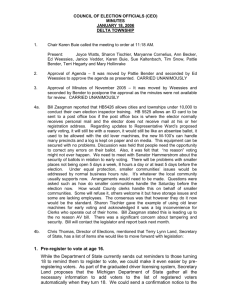Initial Review of Observations - Institute for Democracy in Eastern
advertisement
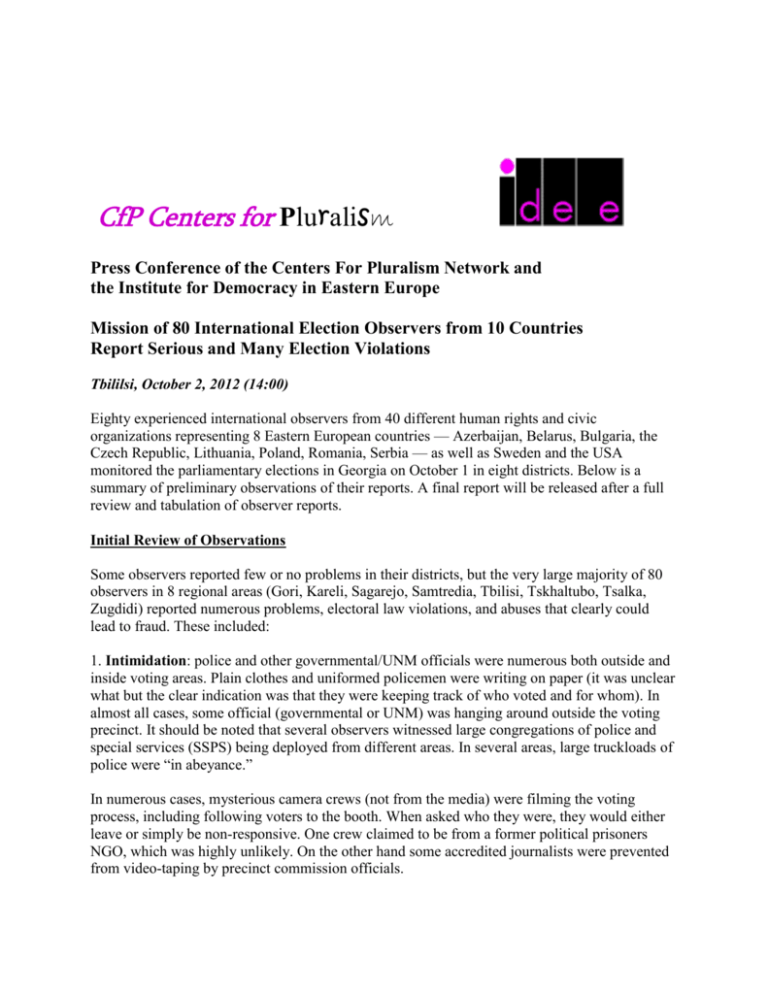
CfP Centers for Pluralism Press Conference of the Centers For Pluralism Network and the Institute for Democracy in Eastern Europe Mission of 80 International Election Observers from 10 Countries Report Serious and Many Election Violations Tbililsi, October 2, 2012 (14:00) Eighty experienced international observers from 40 different human rights and civic organizations representing 8 Eastern European countries — Azerbaijan, Belarus, Bulgaria, the Czech Republic, Lithuania, Poland, Romania, Serbia — as well as Sweden and the USA monitored the parliamentary elections in Georgia on October 1 in eight districts. Below is a summary of preliminary observations of their reports. A final report will be released after a full review and tabulation of observer reports. Initial Review of Observations Some observers reported few or no problems in their districts, but the very large majority of 80 observers in 8 regional areas (Gori, Kareli, Sagarejo, Samtredia, Tbilisi, Tskhaltubo, Tsalka, Zugdidi) reported numerous problems, electoral law violations, and abuses that clearly could lead to fraud. These included: 1. Intimidation: police and other governmental/UNM officials were numerous both outside and inside voting areas. Plain clothes and uniformed policemen were writing on paper (it was unclear what but the clear indication was that they were keeping track of who voted and for whom). In almost all cases, some official (governmental or UNM) was hanging around outside the voting precinct. It should be noted that several observers witnessed large congregations of police and special services (SSPS) being deployed from different areas. In several areas, large truckloads of police were “in abeyance.” In numerous cases, mysterious camera crews (not from the media) were filming the voting process, including following voters to the booth. When asked who they were, they would either leave or simply be non-responsive. One crew claimed to be from a former political prisoners NGO, which was highly unlikely. On the other hand some accredited journalists were prevented from video-taping by precinct commission officials. -2- Another form of intimidation was a strange manner of organizing access to the voting place. A carnival-like barker insisted on calling out the alphabet and preventing people from entering until their letter was called. In several precincts, a UNM observer was sitting in the doorway, impeding access to the voting area. An even more disturbing pattern of behavior was election commission members possessing copies of personal data papers of citizens, presumably made available from police records. These could easily be used for fraud (voting in someone’s, indeed a large group’s, behalf). Observers were unable to obtain any good answer for the existence of such papers in the voting area and commission members ran away when asked. These difficulties were reported in most of the districts. Finally, several commission members tried to intimidate international observers by warning of potentially violent incidents that would definitely occur at a specific time aimed at stealing ballot boxes. This did not occur, but it is clear commission members did not want international observers in their precincts. In a village Tkviavi near the South Ossetian administrative border, a journalist was beaten in sight of an observer. At the voting place, the commission president, also the chief of the area, took all ballots (significantly less than the number of voters) and drove them to Tbilisi without counting them. 2. Voter Lists, Ballots, Voter Verification, and Voting: In several precincts, it was reported that the voter lists included people who no longer lived in the precinct. One father stated that his two daughters were listed but they lived abroad (for a long time); in some villages of Tsalka, a no-longer existent ethnically Greek majority had full lists. In the large majority of districts observed, there were fewer ballots than registered voters. Sometimes, this was a small difference; in many cases, there was a large difference. It remains unclear for what purposes a tangible portion of the ballots was not provided to the precincts but such practices is a violation of the Election Code (Article 63; p.8) and gives ground for suspicions that those missing ballots could have been used for ballot stuffing in the precincts that were not under proper control. Blank but sealed and signed ballots noticed outside the precinct doors points to “circular voting” by activists of the UNM. In such an example of electoral fraud ballots are filled out before entering the station, taken by the voter and dropped into the ballotbox, while the same voter takes the blank ballot given him or her out of the precinct so the procedure may be repeated numerous times. This has been observed in previous Georgian elections. -3- Many cases of botched voter verification were reported whereby the ink used to mark fingers did not reflect in the light. It turns out that one must shake the bottle for the ink to work properly but this was not communicated to election officials. In a number of cases it was unclear how “botched” it was and how intentional. In either case, the ineffective marking meant many people could return for casting multiple ballots (for example, using the extra names on lists or the extra identification papers). Several cases of more than one person entering voting boot were reported. In one village in the Gori region, there were no observers and not even ballots. Initial Conclusion: A great deal of effort was made to attempt significant voter fraud. The claim of victory in all individual mandates in almost all regions outside Tbilisi is already an indication that the ruling party (government) has tried to fix these elections. This type of victory count is similar to elections in autocratic states in post-Soviet states. In this regard, we express special concern regarding slow tabulation and publication of the protocols in the CEC and in particular in the case of single-mandate majority districts.




